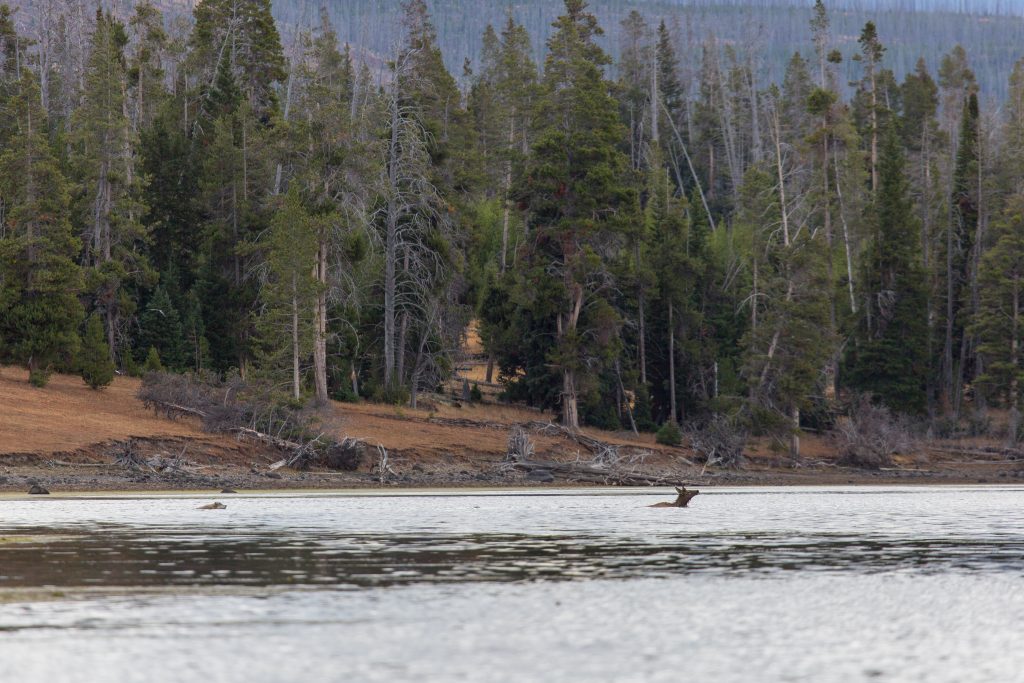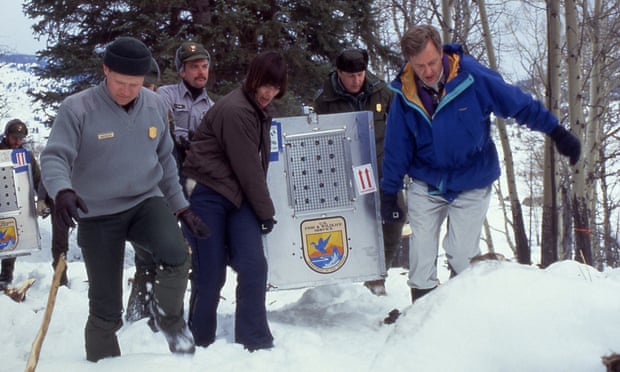We all know that every species has a role to play in keeping the balance in an ecosystem. Even though one species may be dominant, it does not mean it is more important. In contrast, the species most necessary for the health of an ecosystem are usually not abundant. These species are known as keystone species, and “they exert strong control on community structure, not by numerical might, but by their pivotal ecological roles,” (Urry et al., 2017). The wolves of the Yellowstone National Park are an excellent example of the immense importance of keystone species in sustaining the health of an ecosystem.
HISTORY
In the 1920s, the wolves in the Yellowstone National Park were hunted to extinction, causing the land to look very much different from what it does today (Yellowstone National Park Trips, 2020). With no predators to keep their numbers in check, deer and elk populations exploded. They overgrazed the once lush aspen and willow forests, transforming the park into a dry, barren landscape (Sustainable Human, 2014).
Despite efforts to control the ruminant populations, desiccation of habitats forced out other species, such as birds and beavers (Sustainable Human, 2014). The food chain and predator-prey relationship were dangerously imbalanced. By the 1990s, scientists agreed that there was a glaring need for restoration (Cassidy Randall, 2020). Drastic action needed to be taken to save the national park.
REINTRODUCING THE WOLVES
Environmental scientists were aware of the major ecological problems happening in the Yellowstone National Park. Since the disappearance of the wolves, the flora, fauna, and physical geography of the subalpine forests had changed dramatically (Sustainable Human, 2014). Hence, a group of scientists decided to undertake the monumental task of returning a top-level carnivore -and keystone species- to a large ecosystem. This operation was one of the most successful attempts at ecosystem restoration in history (Cassidy Randall, 2020).

A SUCCESS STORY
On January 12, 1995, eight wolves were introduced into the Yellowstone National Park from Jasper National Park in Alberta, Canada (Yellowstone National Park Trips, 2020). Though few in number, as soon as the wolves arrived, they started to have the most remarkable effects. They highlighted what is known as a trophic cascade, whereby “control of each trophic level comes from the trophic level above,” (Urry et al., 2017). In short, this top-down model means that it is the predators that control the population of herbivores, which in turn influence the number of primary producers (Urry et al., 2017). In the case of the Yellowstone National Park, the deer now had predators and so we’re no longer grazing extended areas of land.

As soon as some of the wild vegetation grew back, other species, including birds and beavers, returned because of the trees. Beavers are ecosystem engineers, therefore their dams create niches for other species, such as otters, muskrats, and fish (Sustainable Human, 2014).
Not only did the wolves decrease their numbers, but interestingly they also changed the behaviour of the elk and deer. The herbivores started avoiding certain parts of the park, such as the valleys and gorges, where they could be trapped most easily (Yellowstone National Park Trips, 2017). Consequently, these areas started to regenerate almost immediately.
HOW THE WOLVES CHANGED THE RIVERS
Interestingly, the wolves were indirectly responsible for changes in the behaviour of the rivers (Sustainable Human, 2014). With less pressure from the deer, plants were able to take root along riverbanks, thereby stabilising them. This prevented any erosion, and so the channels began to meander less (Yellowstone National Park Trips, 2020). This successful restoration project demonstrated how keystone species, such as wolves have a widespread impact on all trophic levels. The wolves not only transformed the ecosystem of the Yellowstone National Park but also its physical geography.
THE IMPORTANCE OF KEYSTONE SPECIES
The wolves of the Yellowstone National Park have shown us how keystone species and trophic structures are integral in community dynamics. It is imperative that we understand all the levels of the food chain and analyze their complex trophic interactions because we need this knowledge to perform successful reintroduction operations and effectively restore natural habitats to be sustainable in the future. At THRIVE, we value efforts to restore and protect our Earth’s beautiful ecosystems. You can read more about other sustainability issues on our blog.